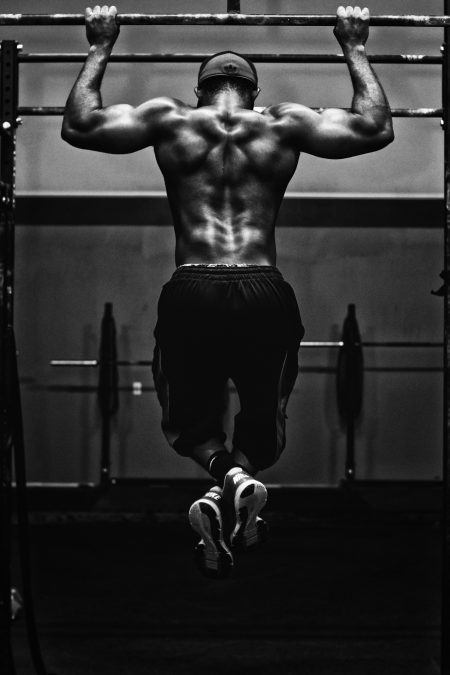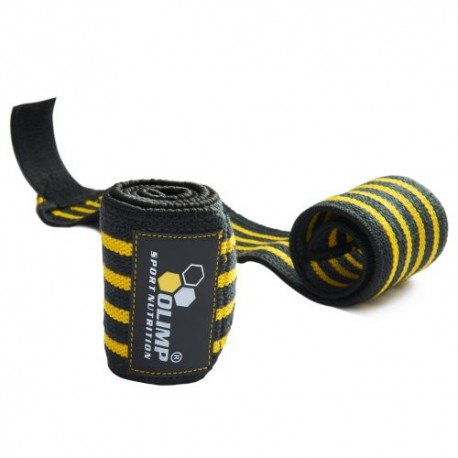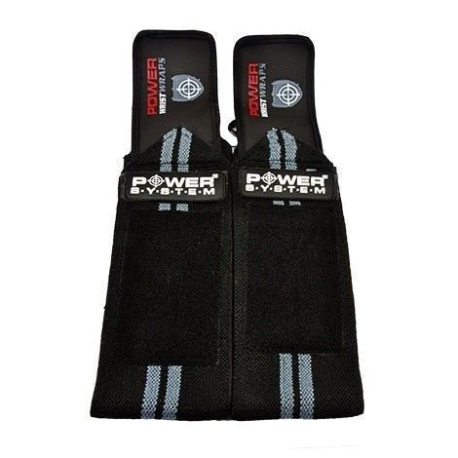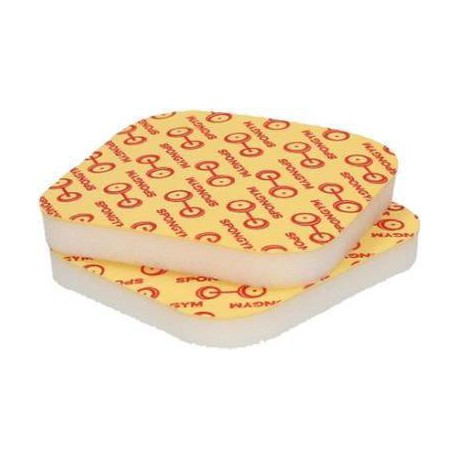Pull-ups - the vertical path to success
"Because you must have a back in life," preferably your own and wide, and there is no better exercise to develop this muscle part than chin-ups. Although it seems extremely easy, it is much more difficult, especially for beginners, and even push-ups, sit-ups and squats were doing very well, with "pull ups" we usually hit a wall, seemingly impossible to jump. The second of the popular sayings - "Training makes perfect" will be perfectly portrayed here.
First approach and ... overhang
Looking at videos on popular social networking sites where the exerciser approaches the bar and smoothly and gracefully performs a few exemplary pull-ups, you can get the impression that there is nothing difficult in lifting your own body up on this piece of tube. We approach, clench our hands on the bar and ... nothing. We hang like a sack, kicking our legs helplessly, and our ass has not strayed one centimeter from the ground. It turns out that, as usual, it's nice and simple on the film, and you have to get a lot of trouble in life. However, contrary to appearances, such a controlled overhang will be one of the first exercises we will perform on our way to the glory of raising the chin above the bar. The overhang helps you get into the habit of pinching your shoulder blades down and pinching your shoulders before moving up. Each type of pull-up, be it Australian (more on that in a moment), overgrip, undergrip or in a neutral hammer grip, starts with the first phase, which is the pinching of the shoulder blades and shoulder tension. Therefore, I recommend that you perform them at the beginning as an isometric exercise that will further progress the pull-ups. Keep your hands slightly wider than the shoulders, in such a position as not to feel discomfort in the shoulder joints. The farther the hands are from each other, the harder it is and the more effort you have to put into the movement, but too narrow a position of the hands is not beneficial at the beginning. Each individual has to feel in what position will be most comfortable for him. When the active hanging on the stick is not a challenge for us, we can move on to the next step, traversing the other side of the globe - Australia.
Australian Pull-ups
The name of this exercise comes from the English language, where Australia is often referred to as "Down Under", and the exercise itself is often referred to as reverse push-ups. in this exercise, we hang the bar at the level of the chest, place our feet directly under it and lower ourselves to the distance of outstretched hands. We tighten the whole body so that it forms a straight line, like in push-ups, without bending the spine in the lumbar part. Then we pull the shoulder blades and in this position we pull the breasts to the bar. This is one complete repetition. We lead the elbows as close to the body as possible. People familiar with the gym will immediately associate themselves with the popular rowing barbell, where you have to position your back straight, tighten your stomach and shoulder blades in the same way. Australian pull-ups are great at building strength and mechanics of movement for pull-ups. They are often used even by those who have mastered the difficult art of lifting the body up, as a supplementary exercise or for the so-called squeezing out the muscles. In addition, reverse push-ups get us used to maintaining the correct body position, which must be tense from the heels to the hands. It is extremely important for further progression and performing correct repetitions. If we get to 8-12 repetitions in several sets, we can move on to the proper torture of our back, i.e. pull-ups on the bar.
Rubber negatives
Despite the excellent progress in reverse pushups, it may turn out that our nervous system and muscles are not capable of performing more than one full pull-up. Well, maybe two more desperate ones. Two solutions come to our aid, one of which has as many supporters as opponents. it is about pulling up with the use of resistance rubbers and the so-called negatives. The rubbers help us in the most difficult phase of the upward movement, i.e. the initial phase. The closer the bar is to our chin, the less helpful they are and we perform the rest with our own strength. MA are crowds of opponents who believe that such a solution is harmful, precisely because this first phase should not be so easy, because then, without help, it will be difficult for us to overcome this point. However, for people with problems in the field of the shoulder girdle, its mobility and possible pain, such a solution may be the only way to slow but still progress in this exercise. I believe that it is better to move slower but forward than to stay stagnant. It was because of many years of neglect and posture defects that I did the first pull-up after months of arduous training. Changes in the joints after suffering from Lyme disease several times do not help in the rapid progression in multi-joint exercises. If, on the other hand, we lack nothing, except the strength to raise our head above the bar, there is nothing to prevent us from mastering the art of lifting the body up by means of negative repetitions. It is often worth combining them in such a way that the first repetition is full, correct, and when the second or third repetition runs out of strength, we make further repetitions negative. Negative repetitions consist of lowering yourself from the end position until your arms are fully extended, keeping in mind that your body is constantly tense. Despite the negative movement, it should be based on the work of the muscles, and not a loose overhang on the tendons and ligaments, which is a straight path to injury.

Hearts up
Finally, there comes the moment when we are able to do 5 full repetitions. And here begins our path towards a broad back, a strong grip and strong forearms. Not only that, a strong and well-built back has a great impact on our health, attracts attention with a fit figure and increases our self-confidence. During everyday work while sitting, moving around in a car, a straight silhouette is difficult to achieve, and the muscles worked out with pull-ups will significantly improve our stabilization. You have to remember that not only the back muscles work during the pull-up, but also the abdomen, which has to be tense all the time. Correct position for chin-ups is very similar to a light hollow body. It is unacceptable to bend the lumbar spine and tuck the crossed legs behind you. Even if the height of the bar does not allow for full extension of the legs and we have to raise them, do not cross the legs, and keep the knees at least in the same line as the pelvis and shoulders. The same principle applies to dips - back straight, legs together, possibly slightly bent but not crossed. Wrong position will put excessive strain on the lumbar spine and lack of involvement of the abdominal muscles. The whole body is supposed to work.
Modifications
There are many different methods of chin-up, although there aren't as many variations to it as push-ups. First of all, there are three basic grips - grip, grip and neutral, also known as hammer grip. Generally, it is recommended to use the basic type of grip at the beginning, and in the further development of training, you can combine it with other types of grip. Often, during one training session, pull-ups are performed with the overgrip wide, the undergrip narrowly with the palms close together, and the overhang with the hands shoulder-width apart. The more advanced ones are archery pull-ups, uneven, one-handed or so-called. muscle up, i.e. forceful entry on the bar. As a standard, we pull up until the chin is over the bar, but it is possible to pull up to the chest, and even to the waist. Progress can be facilitated by our body weight, and specifically its losses, i.e. keeping a slim figure. Overweight people have the hardest time at the beginning. The more body fat we lose on a balanced diet, the better for our results. Some people who train calisthenics combine pull-ups with time and adding an external weight, sometimes even equivalent to their own body weight. This method allows you to reach the heights of your strength capabilities, although for many people doing 10 full and correct repetitions will be the pinnacle of dreams and an excellent result.
We often think that the pull-up exercise is too difficult to master and we will lean towards gym machines. This is a very wrong theory and in practice it turns out that by exercising calmly and slowly progressing, we will reach the stage when the 5x5 routine in pull-ups becomes our integral part of training. Contrary to appearances, pull-ups are not difficult, although reaching satisfactory results can be tedious work.


























